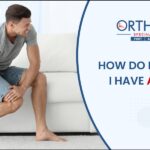Cartilage can be damaged with increasing age, normal wear and tear, or during sports injuries. Damaged cartilage cannot cushion the joint during movement and the bone may rub over each other causing severe pain and inflammation. Cartilage restoration is a method used to deal with osteochondral lesions, cartilage loss and sports injuries.
Dr. Chetan Oswal is a United Kingdom trained Foot and Ankle specialist surgeon practising in Pune He uses modern surgical concepts for treatment of Osteochondral injuries (cartilage injuries) in the knee with OATS (Osteo-Articular Transfer Surgery), ACI & MACI (Autologous Chondrocyte Implantation) & Allograft osteochondral transfers.
These techniques help stimulate the growth of new cartilage that restores the normal function which allows joint preservation
Dietary supplements-
Dietary supplements such as glucosamine and chondroitin are the non-surgical treatment options for cartilage restoration. Chrondroitin sulphate and glucosamine are naturally occurring substances in the body that prevent degradation of cartilage and promote formation of new cartilage.
Chrondroitin sulphate and glucosamine obtained from animal sources are available as over the counter products and are recommended for cartilage restoration. Apart from these various other nutritional supplements are like S-Adenosyl-Methionine and Methylsulfonylmethane are also recommended.
Platelet Rich Plasma (PRP) Injection-
Platelet activation plays a key role in the process of tissue healing. The use of platelet rich plasma (PRP), a portion of the patient’s own blood having a platelet concentration above baseline, is shown to be more effective than visco-supplement (hyaluronic acid) injections. It has been used to promote healing of injured tendons, ligaments, muscles, and joints.
This is an in-office procedure that involves a blood draw, preparation of the PRP, and the injection:
- Blood is drawn from a vein in the patient’s arm into a syringe (15 to 60mL, or 0.5 to 2 ounces, or more may be needed).
- This blood is processed using a centrifuge machine.
- The platelet rich plasma (PRP) portion of the centrifuged blood is separated in a sterile syringe and injected in patients joint.
Results can be seen at 4-6 weeks duration with reduction in pain and improvement in joint function.
Microfracture-
This is a widely practised arthroscopic technique. In this method, a specially designed sharp tool is used arthroscopically to create numerous small holes over the cartilage deficient bone (injured joint surface).
This procedure stimulates healing response by creating new blood supply. Blood supply results in growth of new fibrocartilage.
Chondroplasty-
This is also a widely practised arthroscopic technique used in early stages of cartilage damage. A specially designed radiofrequency device or a slow oscillating arthroscopic shaver is used to debride and stabilise the damaged or injured portion of the cartilage.
This halt’s the progression of cartilage damage and reduces the pain.
Osteo-articular transfer system (OATS)-
Osteo-articular transfer system (OATS) is an arthroscopic surgical procedure to treat isolated cartilage defects that are usually of a small size. The procedure involves transfer of cartilage plugs taken from the non-weight bearing areas of the joint and transferring into the damaged areas of the joint. This procedure is not indicated for wide spread damage of cartilage as seen in osteoarthritis.
During the procedure, the area of damaged cartilage is prepared using a coring tool which makes a perfectly round hole in the bone in the area of damage. The hole is drilled to a size that fits the plug and then a plug of normal cartilage is harvested from a non-weight bearing area of the knee and is implanted into the hole that was created in the damaged area.
Osteochondral Allograft Transplantation-
A cartilage tissue (graft) is taken from a donor and transplanted to the site of the injury. The donor graft is usually obtained from a cadaver cartilage processed and preserved in a bone bank. Allograft technique is recommended if larger part of cartilage is damaged.
Autologous Chondrocyte Implantation-
In this method, a piece of healthy cartilage from other site is removed using arthroscopic technique and is cultured in laboratory using stem cell techniques. Cultured cells form a larger patch of cartilage which is then implanted in the damaged part by a second arthroscopic procedure.
Our Services
Book Appointment
Book Your Appointment Today
We welcome your questions Do you have questions regarding your own situation? Do you actually want to resolve your problem and not just temporarily cover up the pain?




